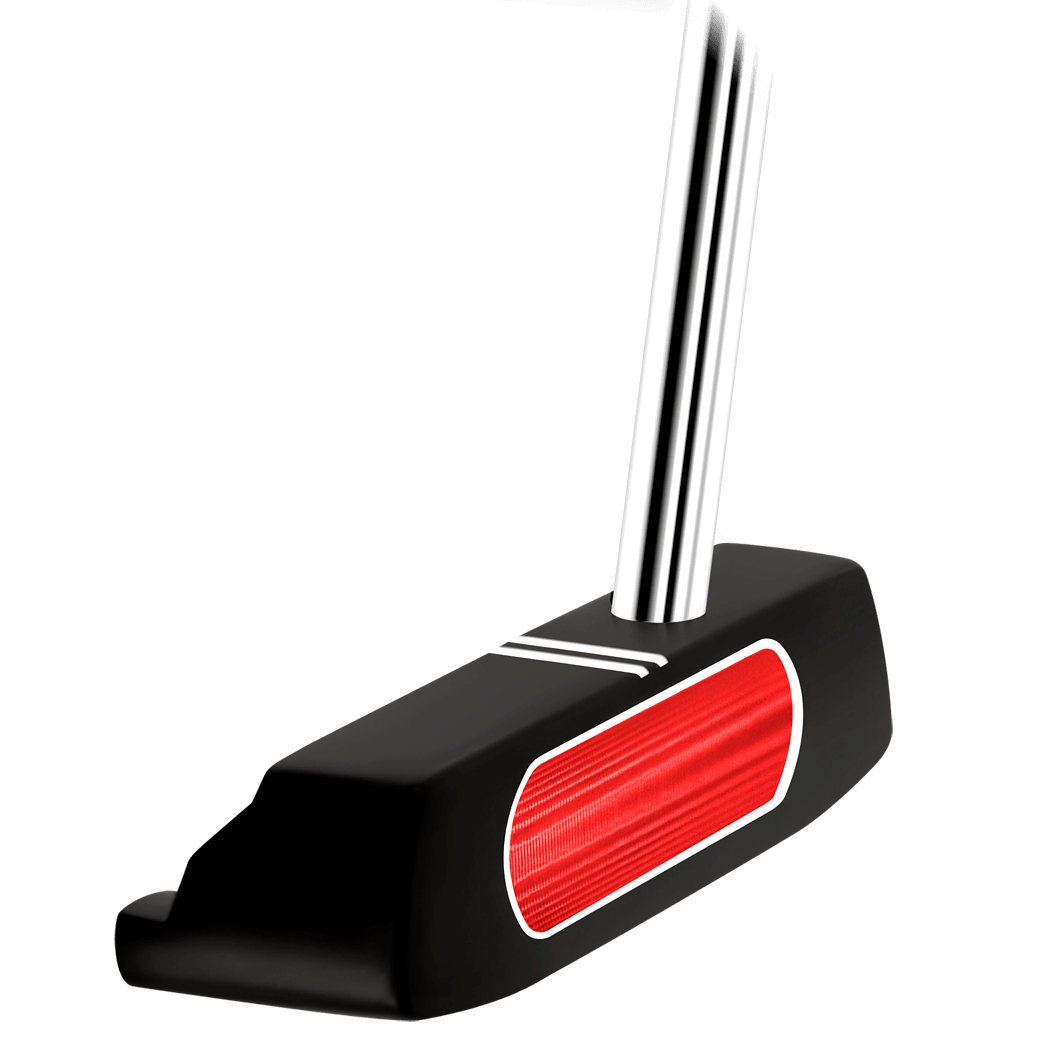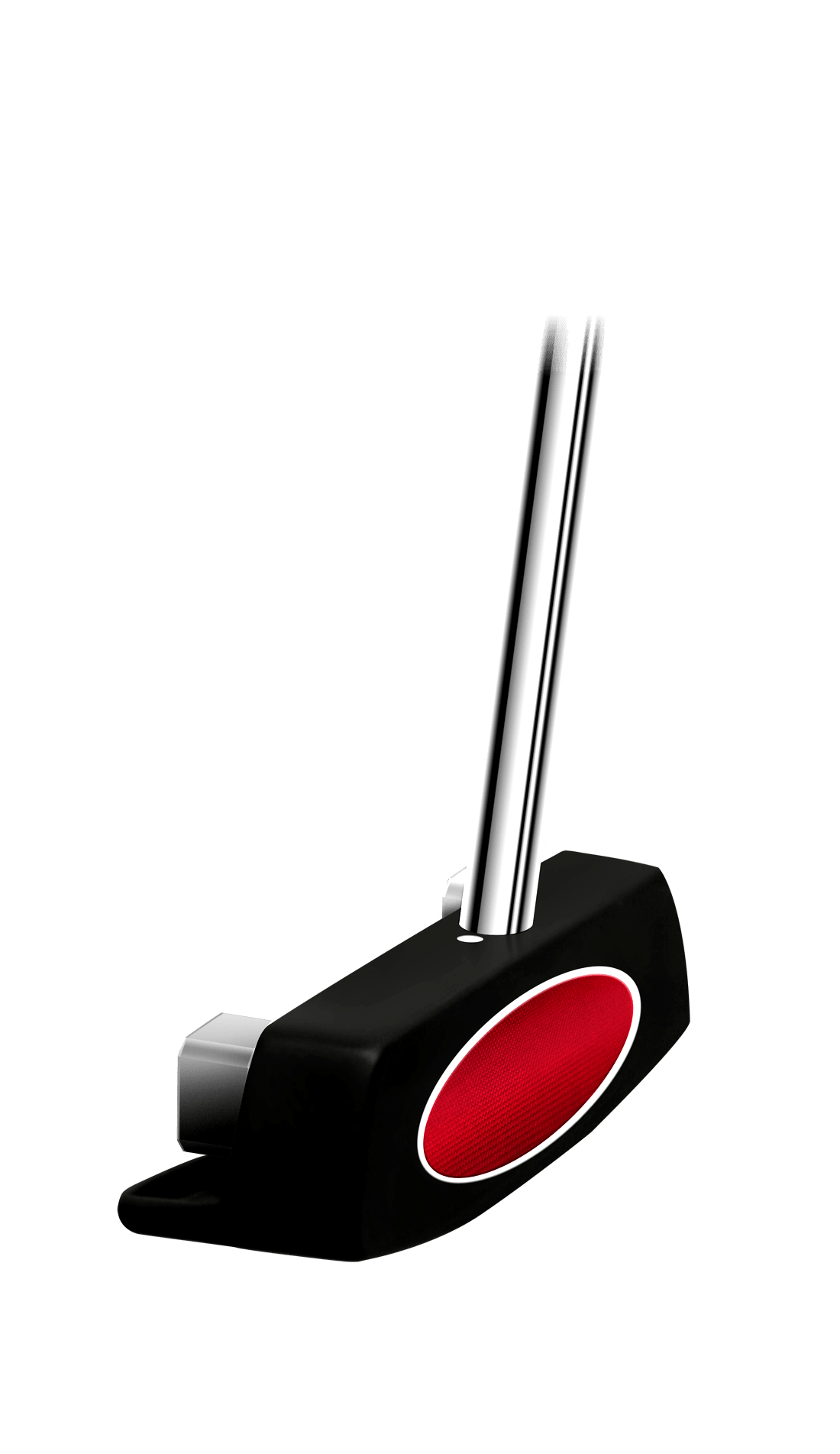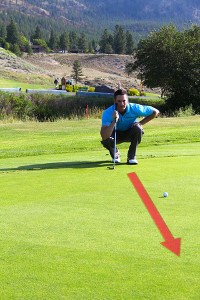
While it's mostly a matter of gravity, reading a green's break is a skill that eludes many players. Not knowing where or how much a putt will curve puts you at a severe disadvantage, especially on lengthier tries where a small misjudgment can equal an error of several feet.
You should start reading a green before stepping foot on it.
Survey the surrounding area as you walk toward the green, locating the highest and lowest points and other factors that may influence the ball's roll. For instance, a bunker with a high lip will often create a downhill slope away from the sand.
Always remember: Most greens tilt in a general direction, usually from back to front. Once on the putting surface, look at the cup to see if it's leaning one way or another.
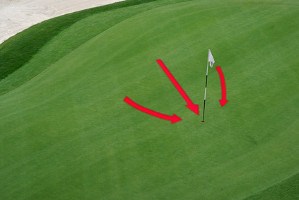
Here's a handful of info points to help you better read greens – and avoid costly three-putts:
1. Putts often break toward the closest body of water, or away from a large landform like a mountain or prominent hill.
2. Play more break when greens are firm and/or dry.
3. Play less break when greens are soft and/or damp.
4. Play more break when putting downhill, less when putting uphill.
Thomas Golf Putters
Traditional, Mid-Length/Belly & Long Putters
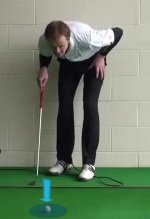
How to Read Greens with the Eyes of Pro
Reading greens is one of the most important skills in golf. Unfortunately, it is also one of the most difficult skills to acquire. Most golf pros don't even bother trying to teach this part of the game, simply telling players that they will get better with experience. While that is true, we want to offer some advice in this article which will hopefully jumpstart your development as a green reader.
When you know how to read greens properly, everything about putting becomes just a little bit easier. You will start to trust the lines that you have picked out, and you will have far more confidence than before – especially when dealing with short putts. All golfers miss-read the greens from time to time, so this isn't about being perfect. Rather, this is about developing a system which will let you make the best possible read by using the right information. Even when you get it wrong from time to time, you will still have confidence knowing that your process is sound.
One thing that many golfers don't realize about green reading is that it is just as important from a speed control perspective as it is from a target line perspective. You need to read the green accurately in order to roll the ball the right distance. It is easy to get caught up in trying to find the perfect line for your putts, but don't allow that focus to take away from nailing down the ideal speed. Good putts need to have both the correct line and the correct pace, so neither side of that equation can be safely ignored. Only when you get extremely close to the hole – within a few feet – can you afford to place more emphasis on line while only thinking quickly about speed.
In this article, we are going to cover the topic of green reading from a variety of angles. We will offer up some tips on how to use different clues to influence your read, as well as providing guidance on building a green reading process that you can use over and over again. Also, we'll talk about how you can get your read in a timely fashion so you don't hold up the pace of play. This topic might not seem as important as something like your swing technique, but it is. In terms of quickly shaving strokes from your average score, there are few things you can work on which will be as powerful as improving your green reading performance.
All of the content in this article has been written from the perspective of a right-handed golfer. If you happen to play left-handed, please take a moment to reverse the directions as necessary.

The Basics of Green Reading
When you think about it, the lack of instruction on this topic in the game of golf is a bit strange. As a new golfer, you get all sorts of advice on just about every aspect of the game, from buying the right clubs to the basics of swing mechanics, and more. However, few people – if any – will say anything to you about reading the greens. You are just supposed to figure it out as you go. This lack of instruction is probably why so many amateurs struggle with this area of the game.
If you feel a little lost when you step onto the green to read a putt, the tips below should help point you in the right direction.
- Start by finding the low side. Your first task when looking over a putt you are about to hit is to find the low side of the hole. It's just that simple – which side of the hole is lower than the other side? It is possible that the ground is flat around the hole, of course, but this is actually a fairly rare occurrence. Most greens have some degree of slope built into them, mostly for drainage purposes. On a severely sloped green, you won't have to look hard to find the low side – it will be obvious. However, on a subtle putting surface, it may take a close look before you can say with confidence that a given side is lower than the other. Once you have this piece of information in mind, you can move on with the rest of the read.
- The end of the putt is critical. Where do most golfers stand when reading a putt? Behind the ball. Where should they be standing? Behind the hole. It is more important to read your putts from behind the hole because the slope around the hole is going to have more of an impact on the putt than the slope back by the ball. As the ball slows down, gravity is going to have more of a chance to make the ball turn down the hill. That is not to say that you can ignore the beginning of the putt, but you should be placing more emphasis on the end of the roll. Later, when we talk about building your green reading process, we will discuss how you can make sure to get a good look from all angles.
- Read the elevation change. This is a piece of the puzzle that countless golfers miss over and over again. While you are busy reading the right to left break of a putt, you need to remember to read the elevation change as well. Is the putt downhill or uphill, overall? How much effect is this slope going to have on the speed of the putt? To get a good look at the elevation change you are dealing with in a given putt, stand off to the side, about halfway between the hole and the ball. From this position, it should be relatively easy to judge the uphill or downhill component of the green. When standing behind the ball (or behind the hole) it is often hard to gauge the elevation change, unless you are dealing with a dramatic slope.
- Consider grain. This is a tricky topic, as many greens will have no meaningful grain to consider. However, in certain parts of the world, reading the grain of the grass is just as important as reading the slope. Even flat putts can break rather dramatically when a strong grain is involved. Basically, grain describes the direction that the grass is growing, and sturdy blades of grass are able to push the ball in the same direction as their growth pattern. As a general rule of thumb, grain is going to grow toward the setting sun. That is not always the case, but it is a good place to start. Another tip is to look at the color of the putting surface. If it looks shiny, you are looking in the same direction as the grain is growing – if the surface looks dull, you are probably looking back into the grain. Typically, courses in cooler climates will feature very little in the way of grain, while warm weather courses (which often use Bermuda grass) will have grain that needs to be considered.
- Play more break. If you ask a professional golfer for one piece of putting advice that he or she would like to pass on to amateur golfers, you would frequently get the response that amateurs need to 'play more break'. In other words, once you get your read, you should add a bit to that read when selecting your final target line. Amateur golfers tend to under read their putts on a consistent basis, which causes the ball to miss on the low side of the hole more times than not. In fact, this is such a common mistake that many golfers will refer to the low side as the 'amateur side'. Don't put yourself in the same category as so many of your amateur counterparts. Add a bit of break to your read, especially on longer putts, and give the ball a chance to fall in from the high side.
It is true that you are going to need to accumulate experience if you hope to read greens effectively moving forward. However, you can get a good start on improving this skill simply by reviewing the tips below. Just like anything else in golf, you will need to practice your green reading if you hope to be successful on the course. During your next practice putting session, don't just stand out on the green and roll one ball after the next. Instead, take time to read each putt, thinking about the tips we have provided above. You won't hit as many putts, but the putts you do hit will be more valuable. With consistent practice, your green reading ability is sure to take a step forward.

Think Like a Detective
Have you ever stood on the green, staring at the line of your putt, unsure which way the ball was going to turn? You aren't alone. All golfers run into this situation from time to time, especially on a course with subtle greens. Believe it or not, greens which are only slightly sloped can be more difficult to putt than those with big breaks from side to side. On severe greens, there are no secrets – you know for certain which way the putt is going to break, and it is up to you to produce a great roll. On the other hand, confusion is common on subtle greens, as you can talk yourself into seeing a given putt breaking in completely opposite directions.
When you come across this kind of tricky putt, one of the best things you can do is to use clues from the surrounding area to help make your decision. The points below highlight some of the 'evidence' golfers will often use to finalize a read.
- Evaluate the surrounding terrain. This is one of the best ways to figure out the slope of the green when you can't see any break in the putt itself. Look at the topography around the putting surface and find the general slope of the surrounding area. For example, if the left side of the green is higher than the right, there is a good chance that the ball will move at least slightly from left to right. This is not a fool-proof method, of course, but it is something to use when you are otherwise lost.
- Look for drainage. This is a handy tip which is often used by professional golfers. When designing a golf course, the architect has to have a way to move water off of the course – or at least off of the greens. Therefore, you will usually find a drain or two somewhere around the putting surface if you look closely. Since water is always going to flow downhill, those drains will be placed in low spots. Find the drain or drains and then work back from there to the hole. What does the location of the drain tell you about the slope of the ground? On a course with strong grain in the greens, this is an especially important tip, as the direction that the water flows will impact the grain as well.
- Bunkers have an impact. The back of a bunker often encroaches on the territory of the green, usually with a 'shoulder' that creates a slope down onto the green. If you are putting anywhere near the location of a bunker, look for a shoulder that might come into the green and influence the roll of your ball.
Don't make the mistake of staring intently at the ground between your golf ball and the hole. This is the most important part of your read, of course, but you can use clues from the surrounding area to help finalize your read. By taking in as much information as possible, you are likely to pick up valuable pieces of data that you would have missed otherwise.






